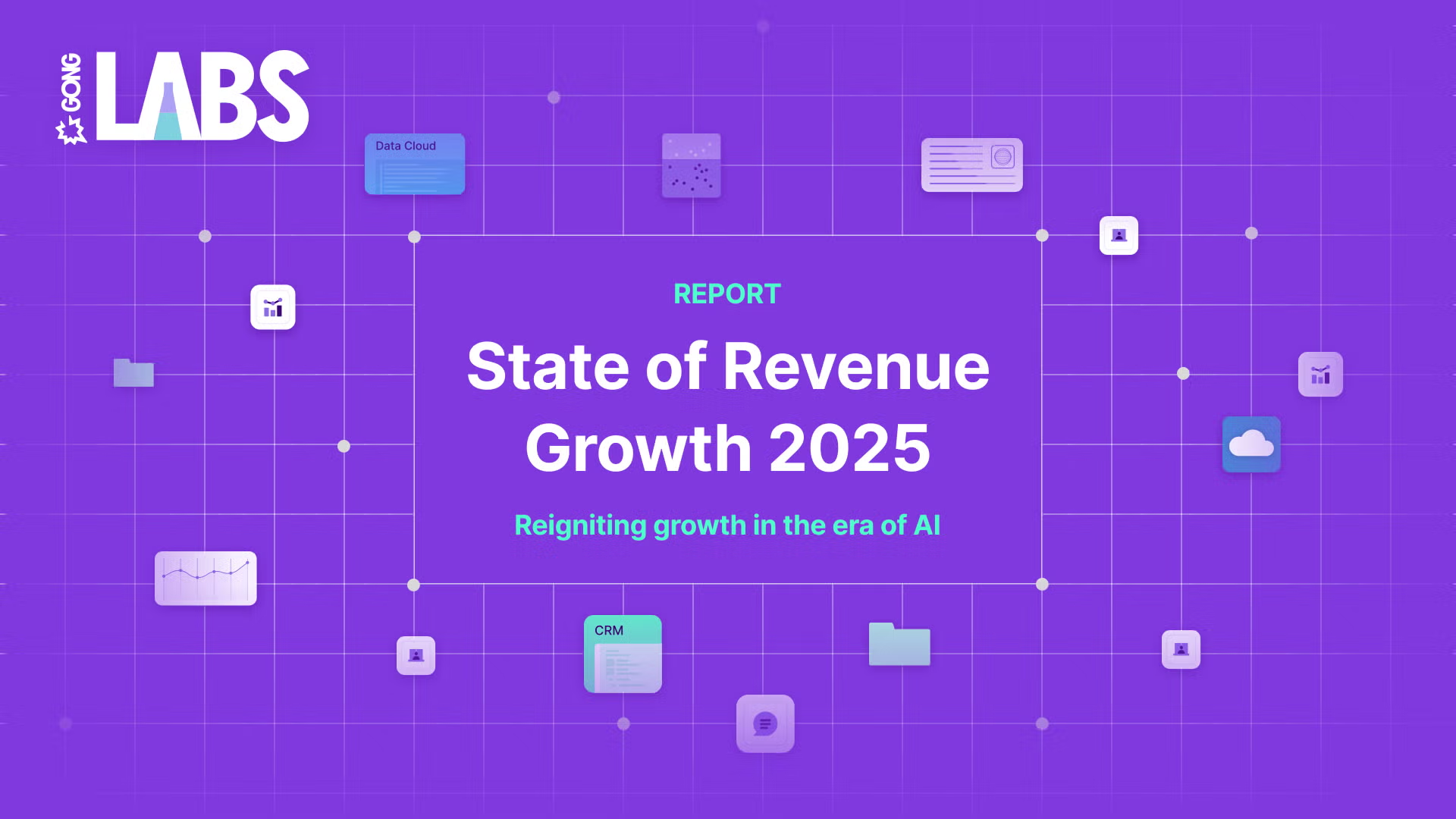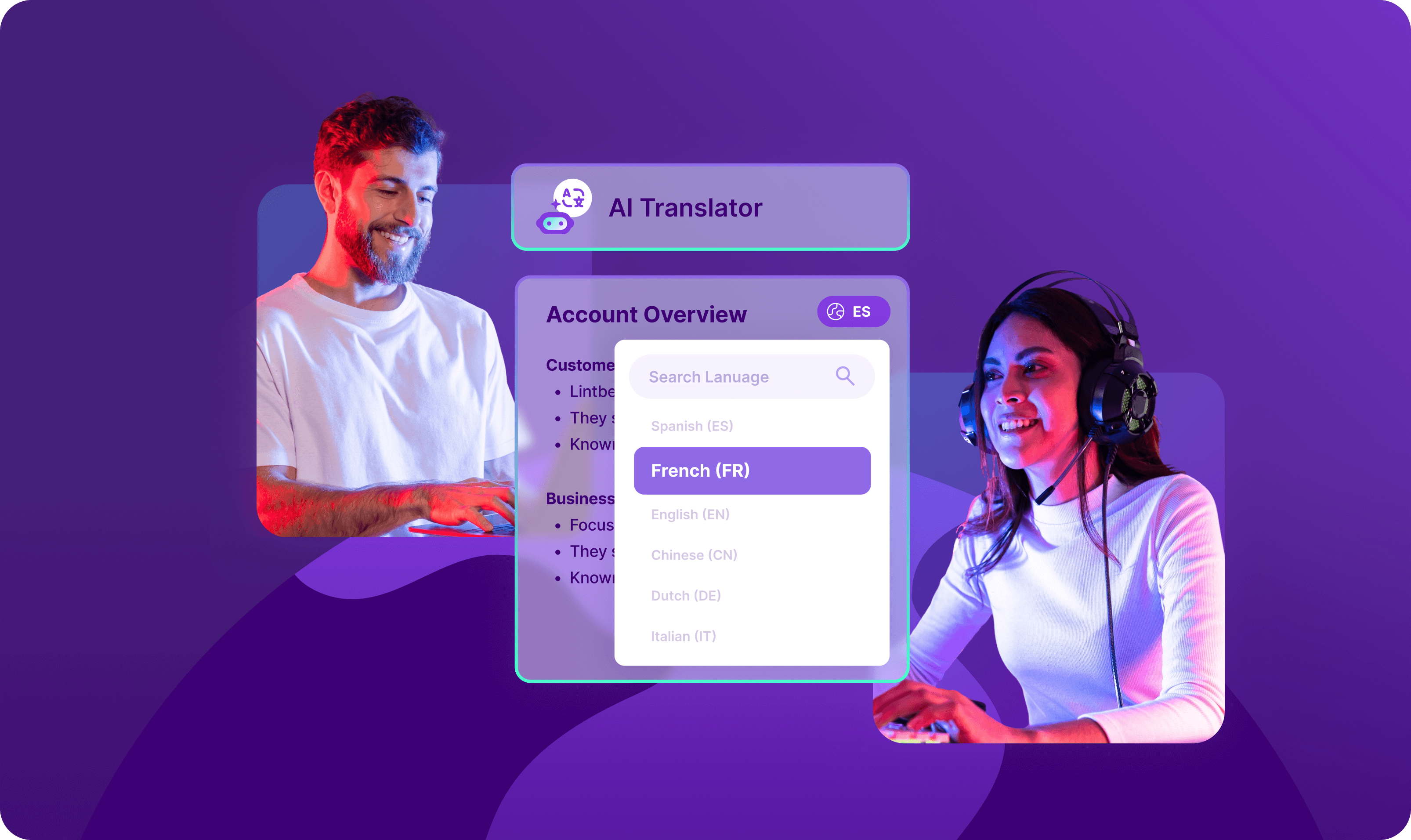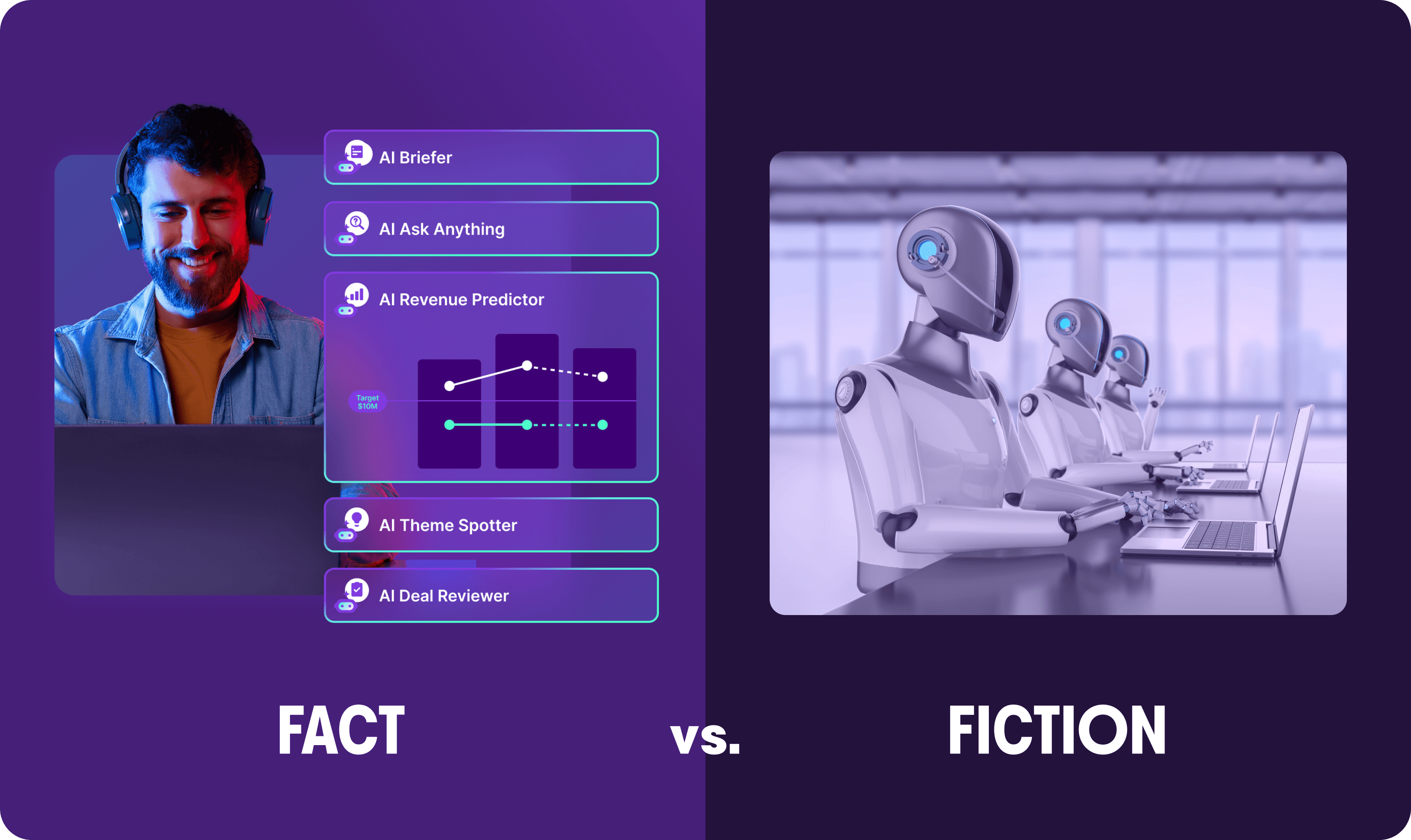Executive insights
Why I love being an enablement leader in the age of AI

Stacey Justice
Vice President of GTM Enablement at Gong
Published on: March 4, 2025

There’s never been a better time to be an enablement leader.
I should know — I’ve been at it for longer than it’s been called “enablement.”
I made my first foray into the space back in 2015. I was a GTM manager at Workfront, several years before Adobe acquired it, and one of Workfront’s leaders asked me to move from marketing into sales, to build their “sales strategy and training team” — which would become their “enablement” team — from scratch.
Now, I’ve come a long way from leading a training team, and I’ve seen a lot of phases of enablement. But I’ve never been more excited to work in this space than right now, in the era of AI.
From manual transcribing to immediate value
Early on, I wanted to help our team improve early stage discovery calls. So, I had a bright idea: We’transcribe discovery calls that had been recorded by an old-school conference call recording service, summarize the transcripts in PowerPoint slides, and then do some live analysis with the team.
The initiative worked well, but it was unbelievably laborious. It cost several members of my team multiple days to just find a good call and produce the transcripts, and then many more hours to connect moments in the call to a best practice.
Heavy users of AI should have alarm bells going off in their heads by now.
Since the dawn of high-quality generative AI, we’ve automated and improved the quality of almost every node in this process: identifying, transcribing, keyword identification, outcome analysis. A process that used to take days now takes minutes.
AI has emerged as a Swiss Army knife for enablement leaders looking to define, improve, and report on value outcomes.
Here are a few reasons there’s never been a better time to be an enablement leader, and why I love being Gong’s VP of GTM Enablement in the age of AI.
3 ways AI makes it rewarding to be an enablement leader — and easier to quantify
1. Dramatically increased new rep productivity
The faster new reps ramp, the sooner they become productive, and the more ARR they contribute. One of our most impactful deployments of AI has been in our onboarding program.
A few months ago, we started using Gong’s AI to track several KPIs that we believed represented rep productivity. These included:
- Number of dials made in first, second, and third months
- Number of calls listened to in the same interval
- Number of emails sent in the same interval
We simultaneously coached new reps to engage in these behaviors, and used AI to correlate behavior uptake with overall revenue attainment. In the first six months of this initiative, we’ve increased ARR sold by new hires by 53%, and decreased time to ramp in our commercial segment by 2.7 months.
2. Proved the effectiveness of new messaging
In another case, we used Gong’s Initiative Boards to assess the effectiveness of new messaging. Tracking the value of new programs like this has historically been one of the toughest tasks for enablement leaders, due to the kind of manual call-combing that my team and I had to do at Workfront, along with incomplete or limited data that didn’t really prove what was working.
Gong’s Initiative Boards use AI to track whether reps are using the new messaging and then correlates that uptake (or non-uptake) with deal win rates. In our most recent messaging initiative, we showed that we doubled win rates when reps used the new messaging.
This has a huge impact not just on the success of those deals, but on the efficacy of coaching. Reps are much more likely to implement new strategies when they see a proven link between the strategies and revenue outcomes.
3. Quantifying my value as an enablement leader
An overarching challenge for enablement leaders is quantifying the value of their programs. Enablement leaders deal in upstream factors — messaging, rep behaviors, etc. — that, without AI, are difficult to connect to downstream revenue impact.
AI automatically connects these dots. I can easily point to revenue outcomes associated with messaging initiatives, onboarding initiatives, coaching initiatives, and more. Quantifying the value of my efforts makes it easier to know how to scale my team, and makes it easier to illustrate return on investment to company leadership.
Enablement leaders who don’t adopt AI risk irrelevancy
AI gives enablement leaders like me a competitive advantage. I can do in minutes what used to take me days; I can prove value that has long been incredibly difficult to quantify.
But before long, that competitive edge will become a competitive necessity. And it should.
Proving value should be the norm for every enablement leader. Connecting carefully chosen KPIs to critical business outcomes should be the norm for onboarding and coaching initiatives. It should be, it soon will be, and the further ahead of the AI curve you are, the more you’ll stand out — and the more you’ll enjoy and feel fulfillment from a career in enablement.

Vice President of GTM Enablement at Gong
Stacey Justice is Vice President of Go-To-Market Enablement at Gong, with over two decades of experience in marketing, communications, and sales enablement.
She specializes in designing data-driven programs that align sales behavior with business strategy, focusing on measurable outcomes like productivity, methodology adoption, and enablement ROI.
Discover more from Gong
Check out the latest product information, executive insights, and selling tips and tricks, all on the Gong blog.



